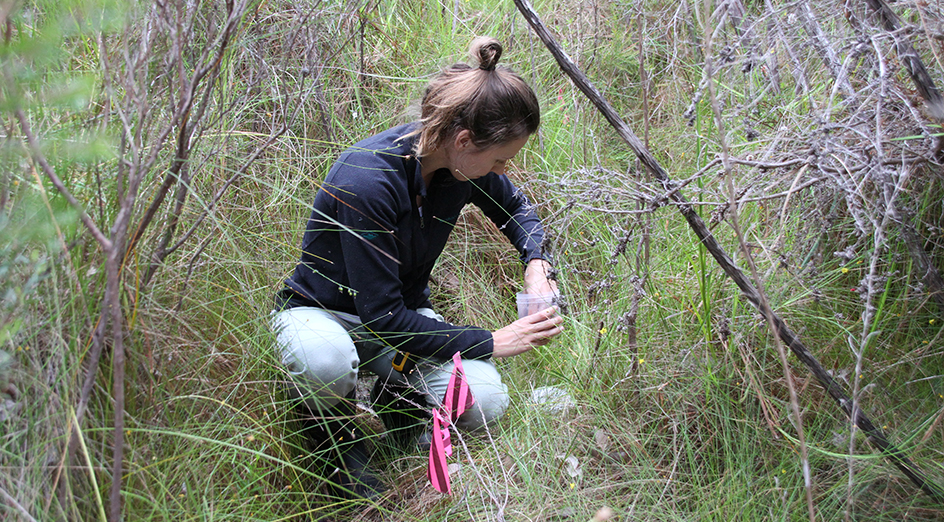A tiny frog from south-west WA thought to have been around for seven million years has been named as one of 26 Australian frog species at greatest risk of extinction in a new research paper released today.
Four UWA researchers were included in a team of 29 scientists from universities, government agencies, zoos and museums who took part in the study, published in Pacific Conservation Biology, and coordinated by the Threatened Species Recovery Hub of the Federal Government’s National Environmental Science Program.
Co-author Dr Nicki Mitchell, a conservation biologist from UWA’s School of Biological Sciences, said the only WA amphibian to make the list, the critically endangered white-bellied frog (Geocrinia alba), was now found in only a few square kilometres of viable habitat in the Margaret River region.
“We hope that by identifying the 26 frog species most at risk of extinction across the country, emergency conservation actions such as captive breeding can be funded and implemented before we lose more species forever,” Dr Mitchell said.
The study found four species were likely already extinct: Queensland’s northern gastric-brooding frog, mountain mist frog and northern tinker frog, and the yellow-spotted tree frog from the Australian Alps.
Emily Hoffmann, a PhD student at UWA’s School of Biological Sciences, who is investigating the decline of the white-bellied frog for her thesis and also a co-author on the study, says while there is still hope for WA’s little amphibian on the list, things are grim.
“The white-bellied frog is probably not what most people would think of as a typical frog. They weigh in at only a gram or so as an adult, and they’re entirely terrestrial, living all of their life-stages on land, even as a tadpole,” Ms Hoffmann said.
“Females lay their eggs in shallow depressions in moist boggy soils and the eggs develop into baby frogs entirely within a jelly-filled burrow. They then take two or three years to mature into adults. And they don’t move far, potentially only a matter of metres in their lifetime!”

Ms Hoffmann, a Forrest Scholar, said the main threats to the white-bellied frogs were activities that changed their habitat, particularly the delicate and unique seepages they relied on for breeding. Vegetation clearing, a drying-warming climate and changes to groundwater were all thought to be primary contributing factors to their decline.
“Currently over a third of the world’s amphibians are threatened with extinction and populations are declining at unprecedented rates. A close relative of the white-bellied frog in the south west, the orange-bellied frog, is also under threat, as is the sunset frog which lives near Walpole,” Ms Hoffmann said.
Emeritus Professor Dale Roberts and evolutionary biologist Dr Renee Catullo, both from UWA’s School of Biological Sciences, were also co-authors on the study. For more information, see here.
Media references
Liz McGrath, UWA Media Advisor, 0433 795 509
